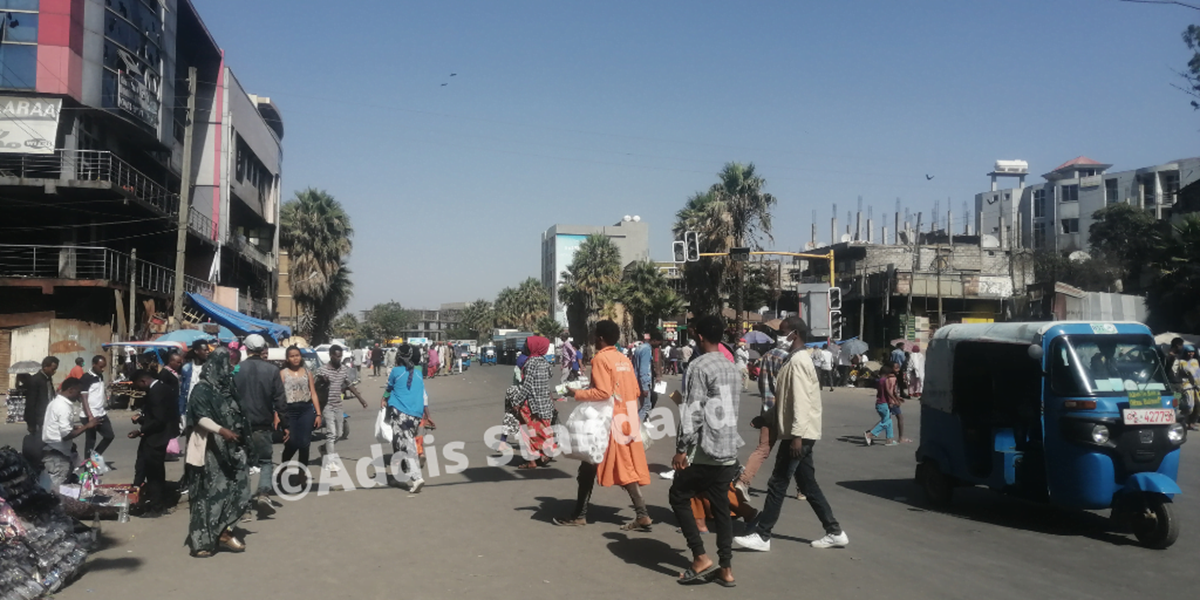Op-ed: National Tree for Ethiopia’s environmental, economic, social welfare

By Teshome Hunduma (PhD)
Addis Abeba – On 9 April 2022, Professor Emeritus Legesse Negash, from Addis Abeba University proposed the evergreen native tree, Podocarpus falcatus (Zigba in Amharic; Birbirssa in Afaan Oromo), as Ethiopia’s National Tree. He shared his proposal for Ethiopia’s National Tree on Twitter with a photo of the regal Podocarpus falcatus. On 15 April 2022, he crafted a letter specifying the value of native trees for Ethiopia’s environmental, economic, and social welfare. He then sent the letter to Tagesse Chafo, the Speaker of the House of Peoples’ Representatives, recommending Zigba as Ethiopia’s first National Tree.
In his letter, Prof.Em. Legesse listed 18 examples of native tree and shrub species that are critical for restoring Ethiopia’s deteriorating ecosystem and highlighted 15 different environmental, socio-cultural, economic, and political importance of native tree and shrub species. Based on his decades of focused research on native tree propagation and restoration mechanisms and drawing from his many years of experience gained from founding and running a Center for Native Trees Propagation and Biodiversity Development in Ethiopia, Legesse proposes that it is high time for Ethiopia to designate one of its regal native tree species (Zigba) as a National Tree. In the same letter, he extended his offer for a public lecture based on his lifelong work on the propagation and restoration of mechanisms of native trees of Ethiopia.
Green Legacy is an all-time initiative without a significant impact
As the country without a National Tree, this proposal came when Ethiopia’s agricultural economy is confronted with dual threats of environmental degradation and food insecurity. With about 120 million mouths to feed, Ethiopia has been unable to decrease the depletion of its natural resources, making its agricultural economy vulnerable. Environmental degradation due to widespread deforestation, declining water resources, overgrazing, biodiversity loss, soil erosion, and soil fertility decline remain significant problems. In 2001, a study on the economics of Ethiopia’s land degradation by German and Ethiopian scientists estimated an annual soil loss rate of 42 tones/ha for croplands and up to 300 tones/ha in extreme cases reducing crop production and productivity. According to the study, this soil loss translates to 44 billion Ethiopian Birr investment for building soil and water conservation structures. 14.4 billion Ethiopian Birr per year was estimated to purchase chemical fertilizers to maintain crop production during the study period. It is clear that when agricultural production and productivity decline, food insecurity, poverty, starvation, and conflict will worsen. This can further catapult the political economy of the agricultural nation into suicidal chaos, which is guaranteed to happen should the degradation of the natural resource base continues unabated.
“The current Ethiopian government’s Regreening Program has planned to restore one-sixth of the country’s degraded land. It has proposed planting about 22 billion trees, much of which are exotic, by the end of the 2022 rainy season.“
I would like, however, to emphasize that there has not been a time in Ethiopian history when political regimes have not had policies to decrease environmental degradation. It has been a priority for different political regimes that Ethiopia had since Emperor Ya’qob’s order of re-afforesting Ethiopian mountains with the African pencilcedar (Juniperus procera or tsidd in Amharic; gattira in Afaan Oromo) in the 17th century. Building terraces and low walls to slow water erosion, the closure of large areas of bare land to allow natural regeneration of trees and vegetation, and widespread exotic tree plantations have been promoted by diverse actors in Ethiopia. Notice that this number of trees is far greater than twice the current population of the world, which means that Ethiopia ‘dares’ to ‘plant’ more than double the number of the world’s individuals in its tiny territory. Is this proposition physically and practically possible? ? Interestingly, the country has not yet successfully covered even a fraction of its extensively degraded landscapes with ecologically adapted trees; most of the trees planted so far are exotic trees such as Prosopis juliflora. Ethiopia has thus miserably fallen short of protecting its vital natural resources (soils, water, and biodiversity) and its people’s livelihoods.
Draconian, top-down development approach remains problematic
Despite good policies on paper and decades of actors’ environmental rehabilitation programs and projects, environmental degradation continues to pose an existential threat to the people of Ethiopia, whose lives are highly dependent on natural resources. The major problem is the continuing, ineffective top-down approach to agricultural development and environmental rehabilitation, despite uninterrupted advocacy by researchers and practitioners for a genuine participatory approach by involving the custodian of natural resources in Ethiopia, the smallholder farmers.
For instance, critics of the Green Legacy initiative argue that the initiative is no more than the Prime Minister’s Photo ops and media attention, pointing to the low survival rate of the trees planted and the abysmal success rates of similar top-down initiatives. This calls for a genuine bottom-up process or decentralized practices of awareness-raising and environmental rehabilitation projects.
Critics of the Green Legacy initiative argue that the initiative is no more than the Prime Minister’s Photo ops and media attention, pointing to the low survival rate of the trees planted and the abysmal success rates of similar top-down initiatives.
Zigba as a National Tree
The proposal of a specific tree species, i.e., Podocarpus falcatus, as a National Tree calls for broader participation of Ethiopia’s population for environmental rehabilitation and scholars and experts to assist various actors with state of the art in natural resource regeneration. Indeed, in a country where ecosystem, culture, ethnicity, and tree diversity abound, it is very important that the essence and implication of a National Tree are understood and accepted by Ethiopia’s representative communities and, through them, the general population. When this happens, the concept of a National Tree can have a unifying power beneficial for mass mobilization programs in environmental rehabilitation work.
Zigba is viewed as “life,” “beauty,” “wealth,” “shade,” and “ancestor symbolizers” by some ethnolinguistic groups in Ethiopia.
Important ideas should therefore start at some point by someone. For instance, the National Tree Day Motion was introduced by Royal Galipeau, a Member of the Parliament for Ottawa-Orléans in Canada. Mr. Galipeau’s enthusiasm for trees comes from 200 000 trees he, his son, father, and grandfather planted in eastern Ontario, Canada — the parallel we see from lifelong native tree propagation and restoration researcher Prof. Em. Legesse is now proposing Zigba as a National Tree. The Zigba tree Legesse proposed as National Tree, is the only representative of the family Podocarpaceae found in Ethiopia. Zigba is an evergreen tree species that can grow up to 40 meters, known by its former specific Latin name, gracilior, for the droopy nature of its elegant, beautiful, and graceful branches. The age of some Zigba trees in Ethiopia is estimated to be 500 years, and it stands out as one of the most beautiful multipurpose trees. According to Ethiopia’s prominent forest researcher, Dr. Demel Teketay, Zigba is known in 15 other languages across different ethnolinguistic groups in Ethiopia, showing its status as cultural keystone tree species. It is viewed as “life,” “beauty,” “wealth,” “shade,” and “ancestor symbolizers” by some ethnolinguistic groups in Ethiopia.
Economically, Zigba is known for its high-class softwood and is used for fuelwood, charcoal, poles, paper pulp, shade, and ornamental purposes. For example, in the 1940s, Zigba was the then number one commercial timber species of Ethiopia, accounting for about 60% of the total trees felled. The oil extracted from its seeds is edible and used traditionally to treat gonorrhea. A recent study has identified natural products from Zigba roots that have the potential to treat cancer. For animals such as Ethiopia’s beautiful black and white colobus monkeys, its fruits are available all year round and serve as a food source at times of food scarcity. Historically, Zigba is remembered in connection with the Italian occupation of Ethiopia in the 1930s. At the time, Italians climbed onto the top of a female Podocarpus tree as a high post for monitoring the Ethiopian resistance army, as demonstrated by the metallic rung in the picture included in this opinion piece. Ecologically, Zigba is critical for soil and water conservation by breaking wind and slowing water erosion. Moreover, it creates a cool and refreshing environment for humans and animals during the driest and hottest seasons. No doubt, it is also an attraction for ecotourism since it endows landscapes with exquisite variations, similar to that imparted by the picturesque Acacia abyssinica (Grar/Laftoo).

National Tree for grassroots mobilization
The designation of Zigba as a National Tree is vital because Zigba brings native trees’ historical, cultural, social, economic, and political importance that Ethiopia’s ethnolinguistically diverse groups can easily associate themselves with. By so doing, a National Tree initiative can balance the top-down government environmental rehabilitation efforts. Specifically, it can complement the current Green Legacy Campaign of planting billions of trees in Ethiopia, although the meaning of ‘billions’ is controversial, as I have challenged above. For instance, this recognition can spark the planting of native trees in neighborhoods and school backyards, the establishment of native tree seedling and plantation centers across the country, awards and competition schemes by different actors for native tree planters and caretakers, educational tours, research on native trees, and tourism. In the long run, the concept of a National Tree can have a transformative effect, e.g., from the current eucalyptus-based monoculture plantation to ecologically sustainable, diverse native tree and shrub plantation if policy incentives like land ownership by farmers are guaranteed.
In conclusion, Prof. Em. Legesse Negash’s proposal to make Zigba a National Tree and offer a lecture on his proposal to the Members of Ethiopia’s Parliamentarians is a litmus test for the Ethiopian government’s use of scientific knowledge and science-based decision-making to shape its environmental management approaches.








